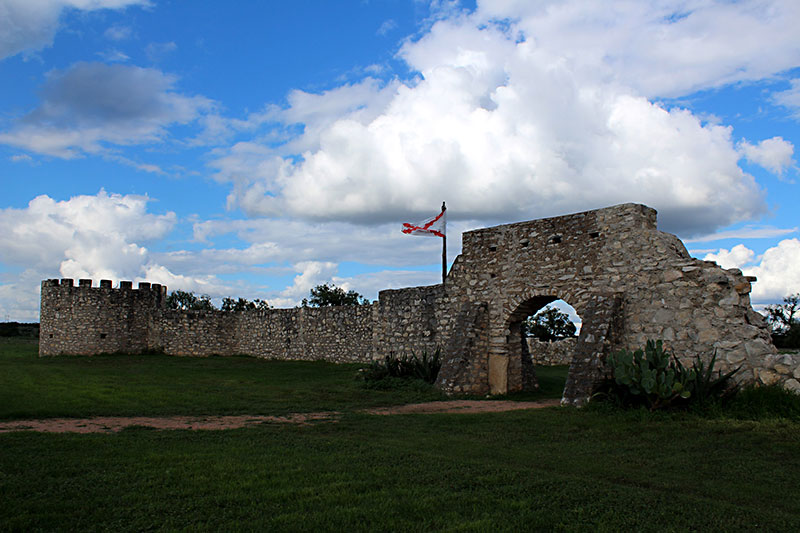Day Trips: Presidio San Saba, Menard
Spanish fort tells the story of a lost settlement
By Gerald E. McLeod, Fri., Feb. 15, 2019
Presidio de San Sabá, one mile west of present-day Menard, Texas, wasn't enough to stop a massacre at its neighboring Spanish mission. After nine hard years, the Spanish military post on the Texas frontier was abandoned.
In 1937, the Texas Centennial Commission partially rebuilt the stone fort constructed in the 1760s, but it soon deteriorated. It reopened in 2011 with a more historically accurate interpretation of the ruins. The small park on the north bank of the San Sabá River now includes a covered picnic area, improved signage, and a stone outline of the fort's walls.
In an effort to reduce depredations on San Antonio-area settlers, the Spanish sent the military and missionaries north to pacify the Lipan Apaches. They also hoped to locate silver deposits in the area.
When the soldiers arrived in 1757, they first built an adobe fort. Wishing to be separated from the influences of the military, the priests constructed a timber mission four miles downstream on the south bank of the river. On the night of March 16, 1758, Comanche warriors, who considered the area their hunting ground, set the mission ablaze and killed eight residents.
By 1768, conditions at the garrison and mission were deplorable and it was abandoned. In the ensuing years, visitors to the old fort scratched their names in the stone entrance, which still stands. The most famous was Jim Bowie, who in 1831 fought off a Native American attack in the ruins while looking for the lost silver mines.
The Mission Santa Cruz de San Sabá ruins are off Highway 190 outside of Menard. Admission is free during daylight hours. An 1850s cavalry post, Fort McKavett, is 17 miles west of the presidio site.
1,437th in a series; collect them all. Follow “Day Trips & Beyond,” a travel blog, at austinchronicle.com/daily/travel.











